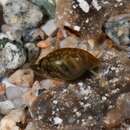pt-BR
nomes no trilho de navegação


Die Gattung Physa ist die namengebende Gattung der Familie der Blasenschnecken (Physidae) (und deren Unterfamilie Physinae und Tribus Physini). Die Familie wird zur Unterordnung Wasserlungenschnecken (Basommatophora) der Lungenschnecken (Pulmonata) gestellt.
Das Gehäuse ist linksgewunden, zwei längliche Mantellappen umgreifen das Gehäuse. Der Apex ist relativ stumpf.
Der systematische Umfang der Gattung ist umstritten, je nachdem wie weit die Gattung gefasst wird werden einige wenige Arten oder mehrere Zehner Arten zur Gattung gestellt. Viele Arten, die unter dem Gattungsnamen Physa beschrieben worden sind, sind heute anderen Gattungen zugewiesen worden. In Mitteleuropa kommt nur eine Art vor.
Die Gattung Physa ist die namengebende Gattung der Familie der Blasenschnecken (Physidae) (und deren Unterfamilie Physinae und Tribus Physini). Die Familie wird zur Unterordnung Wasserlungenschnecken (Basommatophora) der Lungenschnecken (Pulmonata) gestellt.
Physa is a genus of small, left-handed or sinistral, air-breathing freshwater snails, aquatic pulmonate gastropod mollusks in the subfamily Physinae of the family Physidae.[2]
These snails eat algae, diatoms and detritus.
Members of the freshwater pulmonate family Physidae possess a complex of muscles that is unique amongst gastropods. This complex was given the name "physid musculature". The physid musculature has two main components, the physid muscle sensu stricto and the fan muscle. The physid musculature is responsible for a unique ability of physids to rapidly flick their shells from side to side — a reaction that frequently enables them to escape predation.
These small snails, like all the species in the family Physidae, have shells that are sinistral, which means that when the shell is held with the spire pointing up and the aperture facing the viewer, then the aperture is on the left-hand side.
The shells of Physa species have a long and large aperture, a pointed spire, and no operculum. The shells are thin and corneous, and rather transparent.
Species in the genus include:
Physa is a genus of small, left-handed or sinistral, air-breathing freshwater snails, aquatic pulmonate gastropod mollusks in the subfamily Physinae of the family Physidae.
Physa est un genre d'escargots de la famille des Physidae.
Physa is een geslacht van weekdieren uit de klasse van de Gastropoda (slakken).
Physa is een geslacht van weekdieren uit de klasse van de Gastropoda (slakken).
Physa – rodzaj małych, słodkowodnych ślimaków płucodysznych z rodziny rozdętkowatych (Physidae), której jest typem nomenklatorycznym. W języku polskim określane są nazwą rozdętka[2]. Znanych jest kilkanaście gatunków. Niektóre są spotykane w akwariach.
Zasiedlają gęsto porośnięte roślinnością jeziora i zbiorniki z wodą wolno płynącą lub stojącą. Spotykane niemal na całym świecie. W Polsce występuje rozdętka pospolita (Physa fontinalis)[3] oraz zawleczona do Polski w latach 30. XX wieku śródziemnomorska rozdętka zaostrzona (Physa acuta[1][2] – obecnie zaliczana do rodzaju Physella[3] lub Haitia[4]).
Ślimaki z tego rodzaju mają muszlę jajowatego kształtu, lewoskrętną, wysokości 8–12 mm, o bardzo cienkiej i przejrzystej ściance oraz gładkiej i błyszczącej powierzchni[2].
Physa – rodzaj małych, słodkowodnych ślimaków płucodysznych z rodziny rozdętkowatych (Physidae), której jest typem nomenklatorycznym. W języku polskim określane są nazwą rozdętka. Znanych jest kilkanaście gatunków. Niektóre są spotykane w akwariach.
Zasiedlają gęsto porośnięte roślinnością jeziora i zbiorniki z wodą wolno płynącą lub stojącą. Spotykane niemal na całym świecie. W Polsce występuje rozdętka pospolita (Physa fontinalis) oraz zawleczona do Polski w latach 30. XX wieku śródziemnomorska rozdętka zaostrzona (Physa acuta – obecnie zaliczana do rodzaju Physella lub Haitia).
Ślimaki z tego rodzaju mają muszlę jajowatego kształtu, lewoskrętną, wysokości 8–12 mm, o bardzo cienkiej i przejrzystej ściance oraz gładkiej i błyszczącej powierzchni.
Physa solak ya da sola eğilimli, solunum yapan, Physidae familyasına ait, suda yaşayan, akciğerli, karındanbacaklı yumuşakçadır. Bu salyangozlar yosun, diyatome ve döküntülerle beslenir.
Tatlısuda yaşayan ve akciğer solunumu yapan Physidae familyasının üyeleri, karındanbacaklılar arasında eşsiz olan kompleks bir kas yapısına sahiptir. Bu komplekse physid kas sistemi adı verilmiştir. Bu kas sisteminin iki ana bileşeni vardır. Bunlar Physid kası ve Fan kasıdır. Physid kas sistemi Physidlerin avlanılmaktan kaçınmasına olanak sağlayan, kabuklarını yan yana vurmalarından sorumludur.
Physidae familyasında olduğu gibi bu küçük salyangozlar da solak kabuklara sahiptir. Yani kabuk sivri ucundan tutulup diyafram, tutan kişiyle karşı karşıya olduğunda, sol taraftadır.
Physa türlerinin uzun ve geniş diyaframları, sivri helezonları vardır. Solungaç kapakları ise yoktur. Kabukları ince, köşeli ve oldukça saydamdır.
Physa solak ya da sola eğilimli, solunum yapan, Physidae familyasına ait, suda yaşayan, akciğerli, karındanbacaklı yumuşakçadır. Bu salyangozlar yosun, diyatome ve döküntülerle beslenir.
膀胱螺屬(学名:Physa),又名囊螺屬[4],屬软体动物门腹足纲異鰓類泛有肺類喜溼螺類支序的膀胱螺科,是一種細小的淡水螺,能在空氣呼吸。本屬的學名「Physa」在[古希腦語]]的意思就是「風箱」[5]。
現存物種:
同種異名:
化石物種:
膀胱螺屬(学名:Physa),又名囊螺屬,屬软体动物门腹足纲異鰓類泛有肺類喜溼螺類支序的膀胱螺科,是一種細小的淡水螺,能在空氣呼吸。本屬的學名「Physa」在[古希腦語]]的意思就是「風箱」。